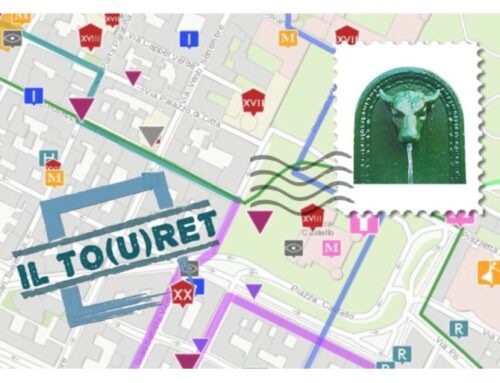Where it was as it will be: the motto of Symbola’s 2017 seminar opens to the future without mortgaging it and motivates, for a while yet, the thousands of local initiatives that are, however, struggling to get out of the endless emergency and the immense fatigue imposed by the complexity of the problems and their incredible bureaucratic amplification.
The title of the seminar Italy’s Sense for the Future implies … after the earthquake. Ermete Realacci, Fabio Renzi and their friends have put together a number of thinking and working heads, showing that there is no lack of vision and prospects for the future, even in such a dramatic situation as the “crater.” Crater, a hateful term, however, indicates the momentous dimension of the tragedy, which resulted in 150,000 homeless, more than 300,000 buildings affected, of which more than 1,200 are protected, and 12,000 cultural properties to be protected.
With stupendous effectiveness within days of the events, people were made safe (and the nearly 300 casualties are fewer than the devastation could have caused). The territory, with a strenuous collective work coordinated by the mayors, metabolized as much as it could the wounds to families and businesses: a great many found a place in the empty houses that were not damaged, someone started work again even if in difficult conditions, in some nuclei the heart of the center was immediately made accessible, at the cost of a thousand scaffoldings. So far the superb local reaction: where one can, life goes on.
But the earthquake has folded entire economies, wiped out communities, dropped all assumptions of getting by for lands and generations prized but already teetering on the brink of poverty. There has long been a call for a strategy for these lands to enhance the resources underutilized by the metropolitan model. It is a theme that runs through the Italian mountains and has needed to be picked up and coordinated by the state for decades.
But at that level we are in serious difficulty. In terms of prospects and urgencies.
From the local level up, the post-earthquake machine has not yet shown itself in full swing, and it has been almost a year. Partly this delay is due to the continuing emergency (tens of thousands of tremors until yesterday have worn away nerves and masonry), partly it is due to the immensity of the devastated territory (140 municipalities from 4 regions-for L’Aquila there were 57 from one region only), but in important part it is due to the inability of central decision-makers to cope with the normalization of activities and services in a short time, and above all to expend energies and resources on the re-founding of local communities.
But come on, let’s not be pessimistic–there is news that makes us regret complaining about the state. For example, the Official Gazette of Feb. 14, 2017, carries a policy document, “RESTART – For the territory development strategy of the crater area.” Wonder!
After a few lines, you realize that this is about the L’Aquila crater, formed in April 2009. Eight years to tell those poor people what the institutions are thinking (of thoughts it is) to help their future. Without noting that in the meantime another earthquake, with more than twice as much damage, struck nearby and brought the already fragile socioeconomic situation of those inland areas to its knees even further.
Time does not pass in ministries. Planning is obsolete even as a term (the stuff of Soviet five-year plans).
The government now acts by allocating funds that the commissioner will distribute through complex slaloms among the bureaucracy, alert to any suspected corruption or formal waste (with Cantone keeping watch), among the standard solutions of specialized techno-structures, each attentive to its specific and indifferent to the overall effect, among the pressures of each mayor, who has at home a differently combined assortment of the same urgencies, increasingly seething and waiting to be answered.
For example: a decision is made to make cottages near the centers to urgently shelter the homeless, but autonomous solutions of individuals are prevented. The solution must be standard: procurement from many thousands of cottages (problems for Canton, of course). All the cottages must be lined up as in a military camp on urbanized plats, which, however, must be demolished at the end of the emergency. The construction time and costs are four times that of stand-alone solutions, and at one year the cottages will be late to be ready (128 out of more than 6,000).
It is clear that there is no vision of the future or hierarchy of priorities in these decision-making processes, rational perhaps to a sectoral view of the immediate, but which seem chaotic when viewed from the outside, from the people, who receive only the outcomes as judgments of an alien autocrat.
We need to react to the ugly blow received… we need to start again from the fundamentals: the courage to get moving, together. So: if (and I emphasize IF) there is a rational decision-making process for giving services, it will not only have to be communicated in its rationale, but it will have to be shared, as a process, with the people being served. It is not a mode of democracy (and that would be enough!) it is a mode of efficiency and effectiveness: it is well known that complex situations require uniform general requirements and flexible solutions. It is well known that desk thinkers are perhaps capable of giving the course, the rules, but that everywhere people know best, on the subject of adaptations to local needs. Here, in recent months, it seems that the general requirements have never been discussed and established and, on the other hand, the solutions are rigid.
Out of the Symbola seminar comes a contribution of merit and method, positively integrated on the first theme: getting us to agree on general requirements. We do not attempt a response to the emergency, but are concerned with giving hope, the broad horizon, the future of the generation that will grow up after the earthquake.
A number of strong points emerged from the seminar to be rooted in a shared perspective, in an order of priorities essential to start together, communities and institutions, right away, like a boat that sets sail on the escort of a new sail, and does not patch a cloth long since worn out and permanently torn by the earthquake.
It is an attempt to make room for the underlying strategies, which have been in the air for years but never embraced by local communities, that must now become the strong backbone of reconstruction. For their issues, discussions are called for and but then, quickly, addresses and requirements, decisive already because of the urgency, useful now, for the coming months, but to be maintained with a view to the coming lustrums.
Five points that came out strong from the Treia theater are enough to give a sense of a valuable approach, to which all decision makers, political and technical, should be called.
Community first and then Safety first
First of all, the safety of people, because it is an essential need at less than which people leave and the community dissolves. Without the continuity of the community there is no meaning (i.e., we cannot understand the meaning) of everything else, including the preservation of testimonies. The testimonies, which we call Cultural Heritage, are things that mark the history of the community and the territory and will still bear witness to this natural violence and the historical way in which people reacted to it: there will be no hiding of the 21st century intervention that secures places to live and visit, but to boast about it for centuries to come.
What it will look like is not given but it better be green, smart and glocal
Nothing will be the same as before, even the places-symbols of local identity-will be different because their context will have changed, their constructive affair (which becomes reconstructive), the gaze of the inhabitant who has regained his place and of the visitor, who will be admired for the affair of today more than for the physical good. But then, if this is an opportunity for new settlement, let us study the best: let us promote the crater as a place of experimentation of sustainable living, of production imbued with circular economy, of intangible relations guaranteed by broadband, of reconstruction of ancient assets that also witnesses contemporaneity. The places are suitable, because of the intense and balanced historical city-country relationship, the traditional sobriety of the communities and industriousness of its artisans.
Reinvigorating neighborhood networks, nodes of long networks
The ravaged territory is home to one of Italy’s most extraordinary features: a network of towns that have been cities, where the word commune still resonates with its meaning, where activities traditionally integrate into supply chains and innovation is metabolized constantly. The small physical distances, the diverse but always traveled territory, being in the middle between large cities and millennia-old lines of traffic have accustomed these burghers to being citizens, of their commune and of the world. Here, too, we need to experiment, because so far little has been done for networks (mention is made of the Evolved Cultural District that the Marche tried a few years ago), but we cannot lose these continuities, these traditions of proximity that are the most particular resource to count on for local development. Thus these territories can constitute themselves as useful laboratories for all of non-metropolitan Italy, the one that today we are finally beginning to appreciate as a way out of an endless crisis.
Continued participation in new design
Commissioners are beginning to be afraid to attend meetings because they know that people are beginning to get fed up with waiting, with no information except gradually procrastinated promises. The dispersed community is in danger of coming together in protest, when it would be valuable if brought together in planning, in direct participation in the design of reconstruction initiatives. Where this happens, due to the ability of some mayor or other enlightened people, the local project must absolutely be followed, accompanied, facilitated, because it is only by feeling the battle to inhabit again as one’s own that then, in the coming years, one will have the strength to stay and re-inhabit places now ungrateful: every project is beautiful to those who thought of it.
Giving a sign of departure: breaking free from the rubble
If the previous points have been forcefully expressed, the last (but first to go) one reads under the surface, like a kind of subconscious surfacing: to remove the rubble scandal.
It is unbelievable that we do not realize the violence that rubble and uninhabitable centers cause in the souls of the inhabitants. What was inhabited now is an imposing chaos, devoid of meaning except that of the frustration of any attempt to inhabit again, of the prohibition to return. To let the things and houses of a village rot, reduced to an indistinct mountain or deserted place, is like letting a dead person rot in the street. Just as that is not treatable as seventy kilograms of flesh, so rubble cannot be reduced to special waste: it is a sacred body, which needs a liturgy of separation and disappearance, a nearby burial place where the community recognizes its past. Let each community choose where to elect that place, and then away, with maximum speed, mound the rubble and return the liberated landscape to the people, where they can design their future. And don’t say there are health hazards, since they have been left in the air for a year so far, and don’t say there are problems with property or artifacts of cultural interest. I am sure that the technicians will know how to make the squares and rooms of the centers still standing accessible, will know how to minimize the damage of undifferentiated burial. But from Monday we must start and finish as soon as possible, with the available means, without giant contracts: on this leave it to the mayors, who are watched closely by their citizens.



